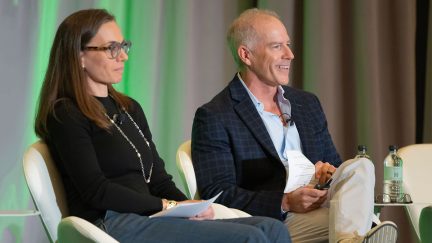For more stories like this, sign up for the PLANADVISERdash daily newsletter.
Independent Advisers Better Off Financially
Of those, 64% indicated they were better off within six months of their move.
The study explores the transition process itself: researching options, making the move and experiencing independence, as well as its short- and longer-term impact on advisers.
More than half (54%) of “movers” to independence did so without any strong influence from others, and eight out of 10 (80%) made the switch alone (20% moved as a team). The study found that half of the advisers transitioned without a written plan, yet their principal suggestions to others considering a move were to do research and be organized.
Advisers said their “biggest surprise” regarding their moves was the number of clients who did—or did not—move with them. Advisers reported that 39% of their clients were immediately supportive or pleased with their decision, another 43% were initially surprised but ultimately supportive, while only 18% were initially concerned but ultimately supportive. Nearly nine in 10 (86%) of newly independent advisers said that all or most of their clients moved with them.
When considering their original motivations, most of the advisers reported that they were “where they wanted to be” toward meeting their goals. Nine out of 10 report that they were happy with their decision to pursue independence, with nearly half (45%) indicating they knew immediately it was the right move. The No. 1 insight advisers said they wished they had known before transitioning was that they should have made the move sooner, followed, at No. 2, by a feeling that independence is better.
Advisers reported some complications with the transition process—58% said that it was somewhat or extremely difficult to re-paper their clients’ accounts.
When asked for their suggestions to other advisers considering a move—in addition to “do research” and “be organized”—they said:
- Know what you want, and make sure it’s a good fit.
- Talk to others who have moved.
- Do what’s best for clients.
“This study validates what we’ve been seeing in the marketplace,” saidSanjivMirchandani, president of National Financial, Fidelity’s clearing and custody company. “Advisers seeking independence are interested in the flexibility to design their practices, choose their products and define their brands. And they’re open to exploring a variety of business models.”
The “Fidelity Insights on Independence Study” was conducted in collaboration with Cogent Research between September 26 and October 13, 2011 among 173 advisers who moved to an independent model, defined as joining or starting an independent broker/dealer, joining an established RIA firm, starting up an RIA or joining or establishing a corporate RIA of a broker/dealer firm.
You Might Also Like:

Rethinking Opportunities for RIA Growth

PE Ownership Expands Into Midsize, Small RIAs



